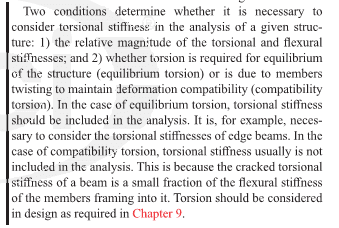NewbieInSE
Structural
- Dec 19, 2019
- 234
Dear Engineers,
Is there any reference from any Code such as ACI, regarding totally neglecting the Compatibility Torsion by distributing it to the adjoining slab, and beams perpendicular to each. In other words, is it allowed to redistribute Compatibility Torsion without any special detailing, except for taking its (redistribution) effect in designing adjoining members?
Is there any reference from any Code such as ACI, regarding totally neglecting the Compatibility Torsion by distributing it to the adjoining slab, and beams perpendicular to each. In other words, is it allowed to redistribute Compatibility Torsion without any special detailing, except for taking its (redistribution) effect in designing adjoining members?

